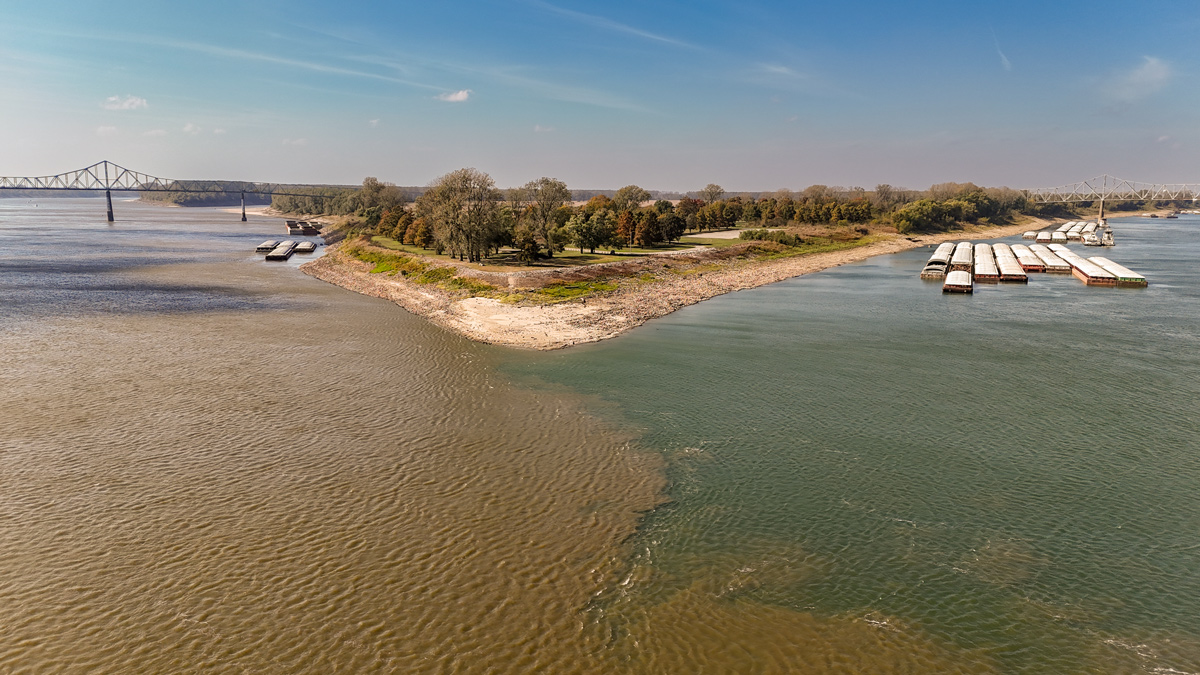The expedition moves down the Ohio and sets up a camp at its confluence with the Mississippi. Lewis is ill, but he finds relief from a strong laxative found in Rush’s bilious pills.
In Washington City, “An Account of Louisiana” is presented to Congress. The report includes information about a mountain of rock salt and Spanish land grants.
Arriving at the Mouth of the Ohio
[P]assed Wilkinson ville about 12 Oclock oposite to which is the first or great chain of rocks streching in an oblique manner across the Oho this evening landed on the point at which the Ohio and Mississippi form there junchon
—Meriwether Lewis
Lewis’s Illness and Treatment
set out by light at sunrise I took a doze of Rush’s pills which operated extremly well and I found myself much to my satisfaction intirely clear of fever by the evening. felt myself much better but extreemly weak—
—Meriwether Lewis
The pamphlet “An Account of Louisiana,” is presented to the Senate and House of Representatives on this day. It provides 70 pages of details about the Louisiana province including a fanciful tale of a mountain of pure rock salt and the serious issue of Spanish Land Grants.
Mountain of Rock Salt
One extraordinary fact relative to salt must not be omitted. There exists about 1000 miles up the Missouri, and not far from that river, a Salt Mountain! The existence of such a mountain might be questioned, were it not for the testimony of several respectable and enterprising traders, who have verified it, and who have exhibited several bushels of the salt to the curiosity of the people of St. Louis . . . . This mountain is said to be 180 miles long, and 45 in width, composed of solid rock salt, without any trees, or even shrubs on it.[1]U.S. State Department, “An Account of Louisiana laid before Congress,” (Providence: Heaton & Williams), Nov 13, 1803, 16.
Spanish Land Grants
The lands are held in some instances by grants from the Crown, but mostly from the Colonial government. Perhaps not one quarter part of the lands granted in Louisiana are held by complete titles; and of the remainder a considerable part depends upon a written permission of the officer last mentioned. This practice has always been countenanced by the Spanish government, in order that poor men, when they found themselves at ease, might at their own conveniency apply for and obtain complete titles. In the mean time, such imperfect rights were suffered by the government to descend by inheritance, and even to be transferred by private contract.[2]Ibid., 41–42.
Experience the Lewis and Clark Trail
The Lewis and Clark Trail Experience—our sister site at lewisandclark.travel—connects the world to people and places on the Lewis and Clark Trail.
Plan a trip related to November 14, 1803:


